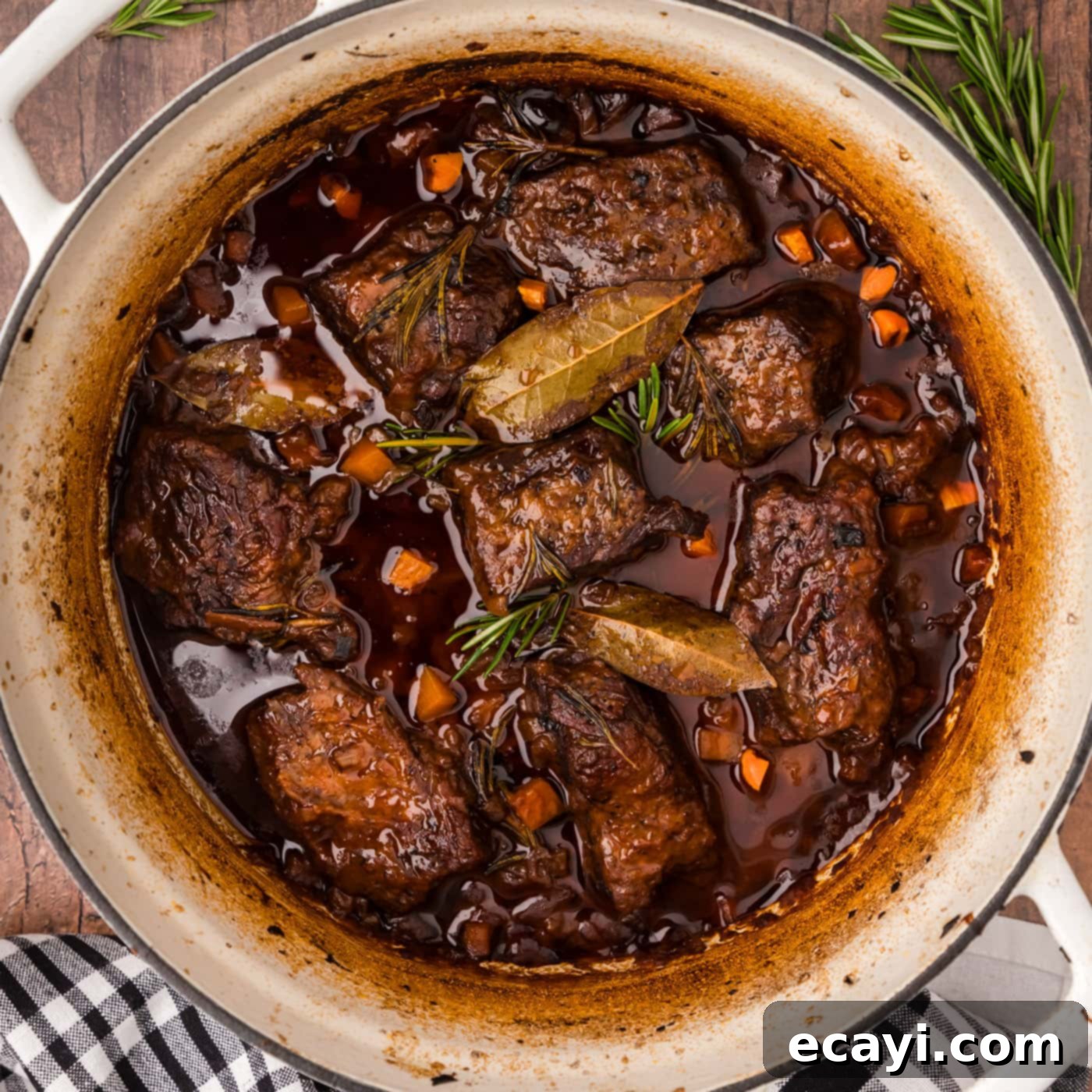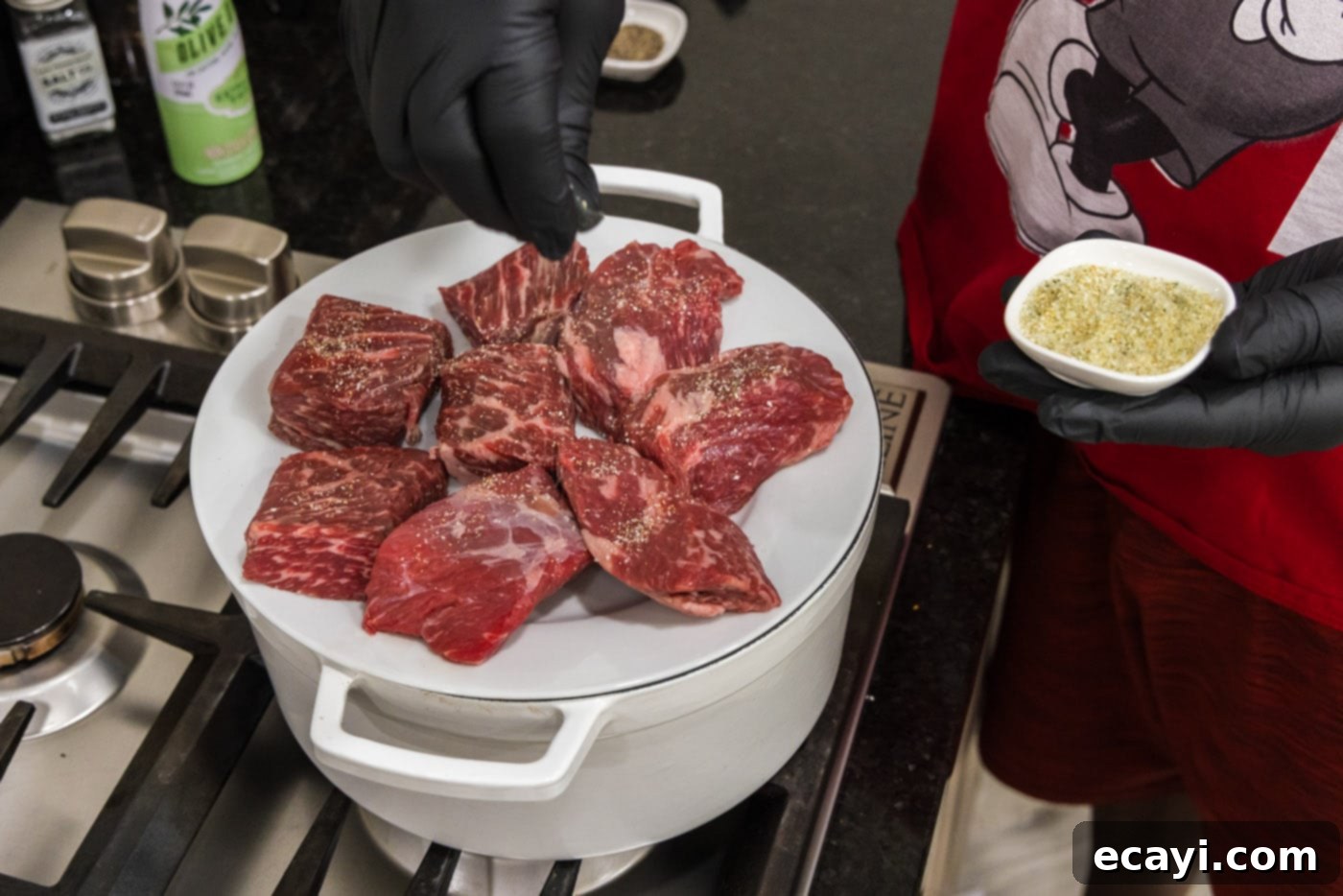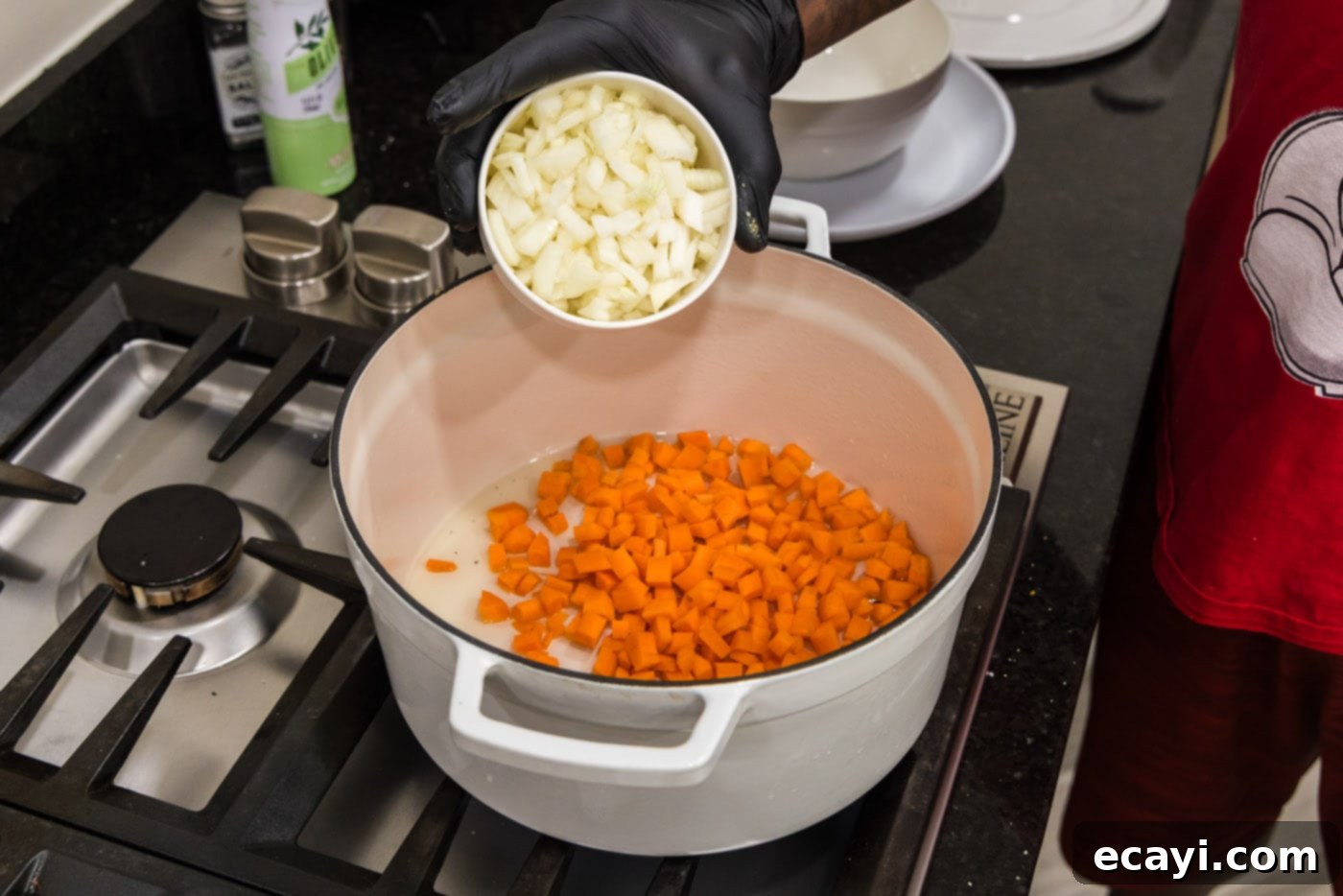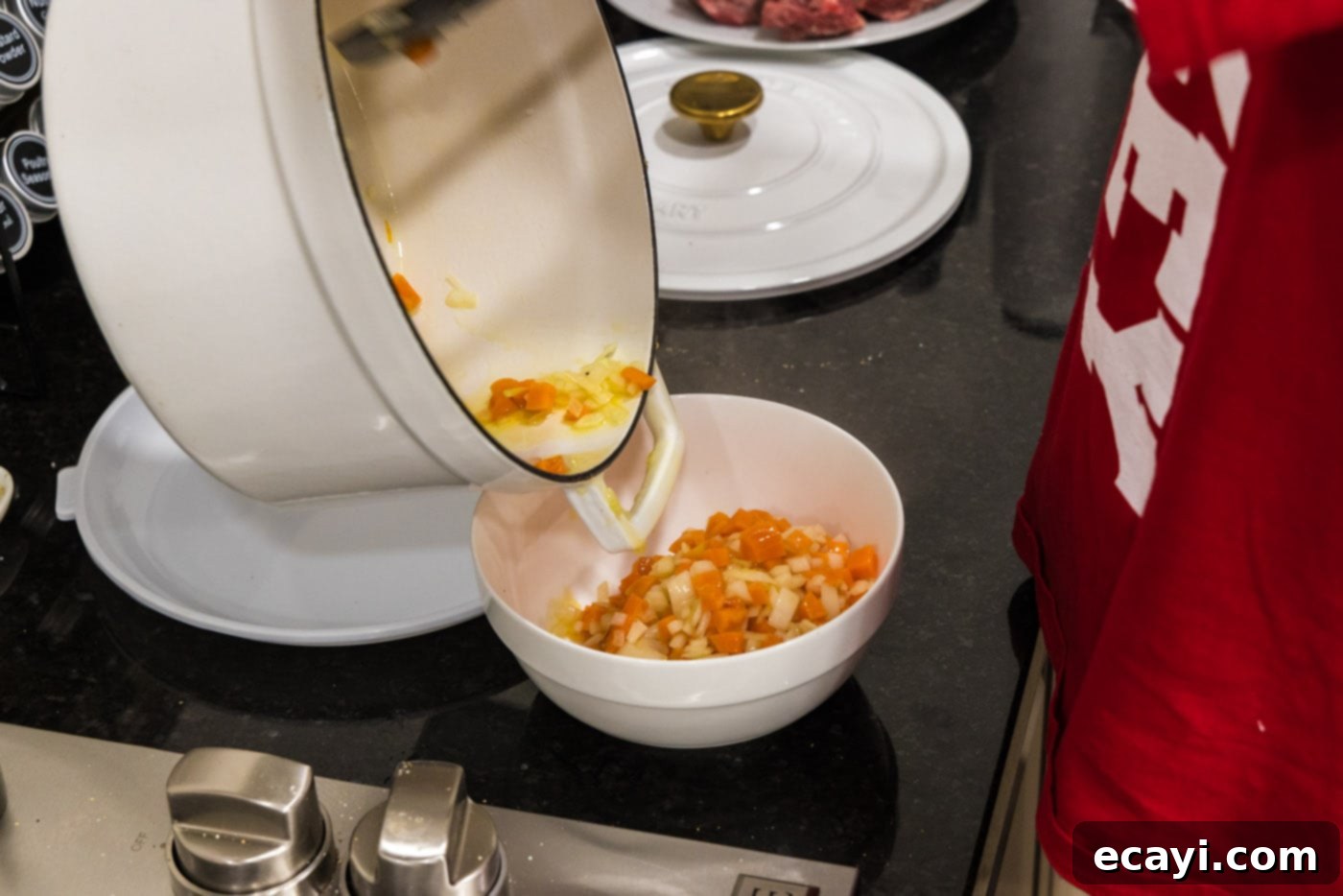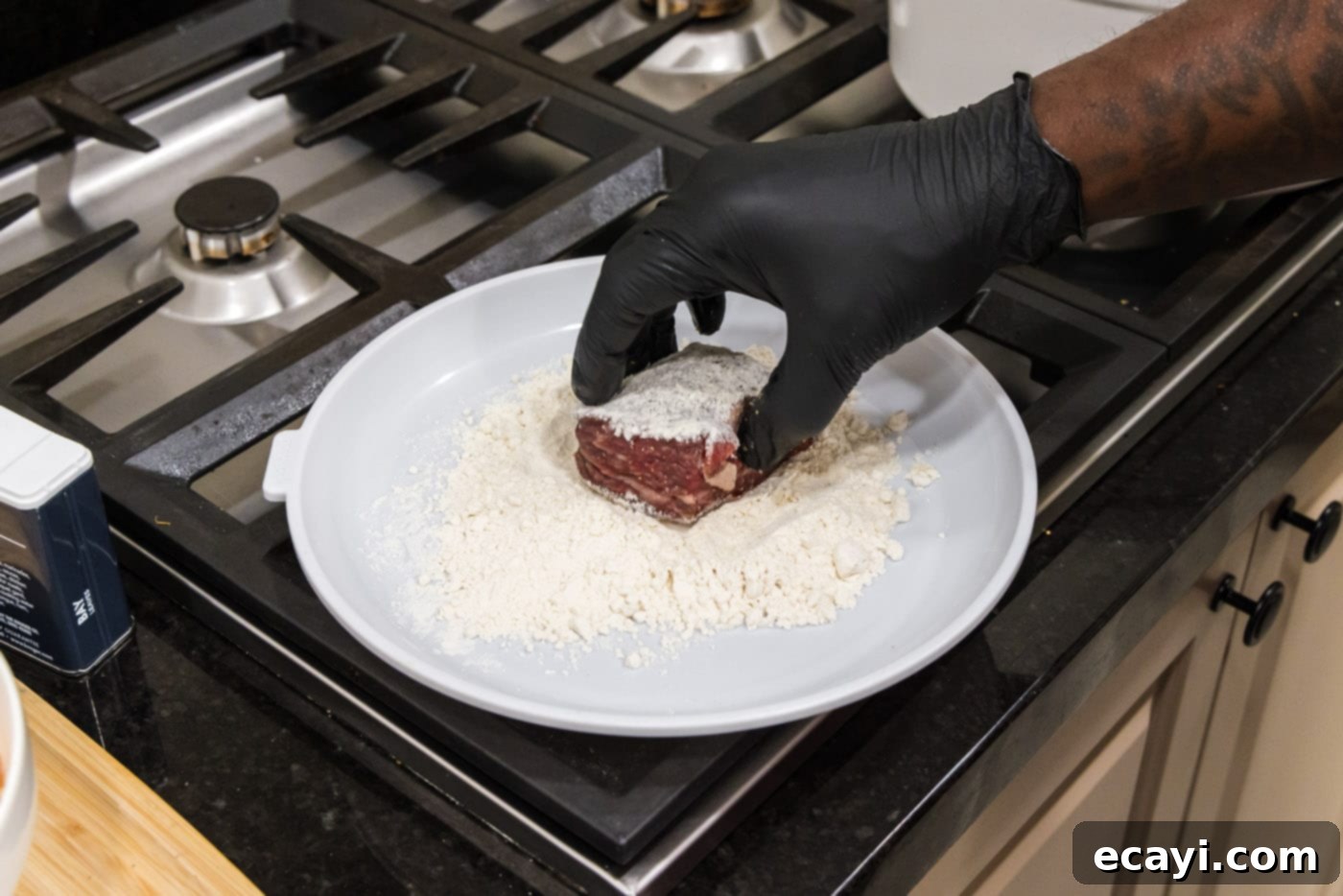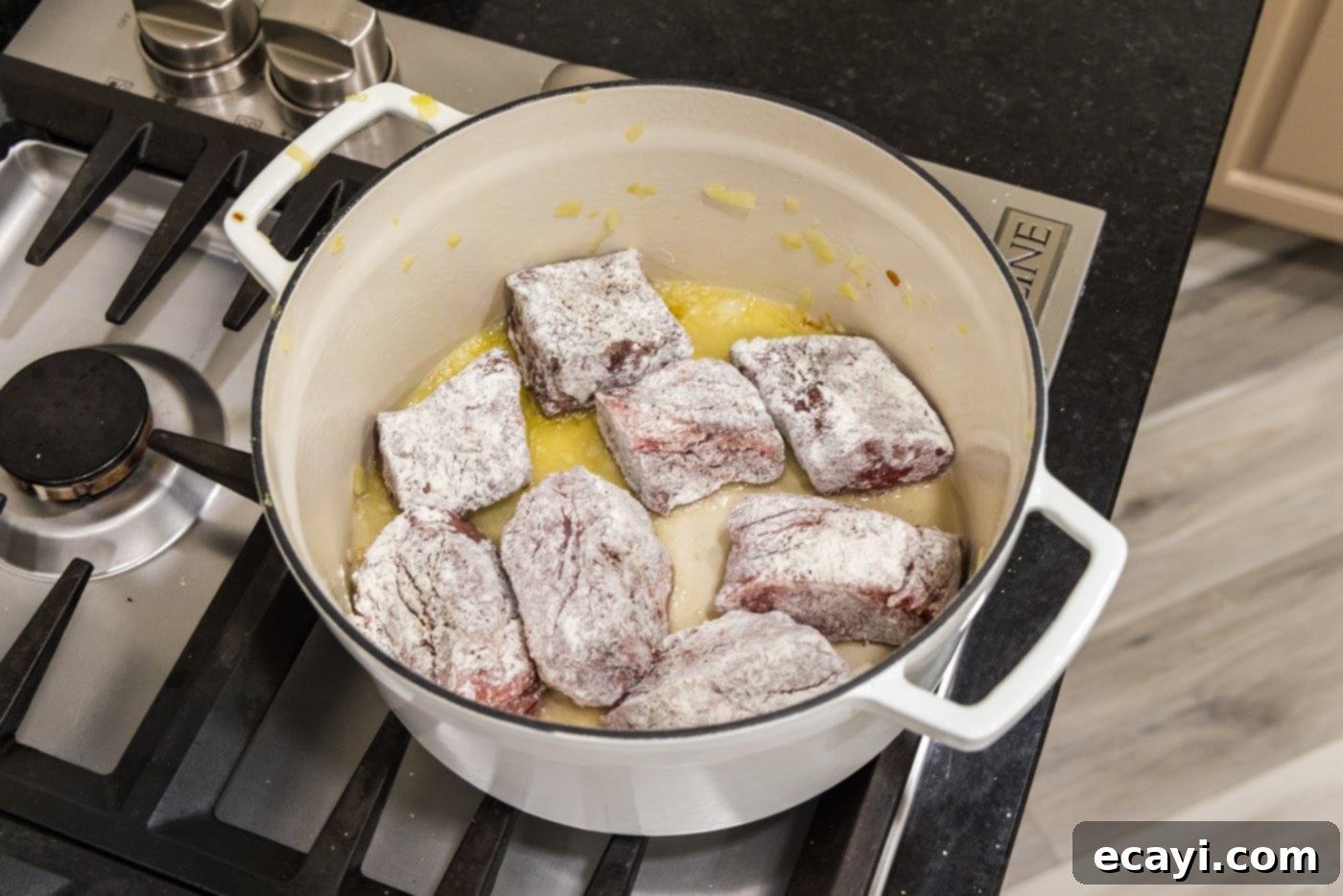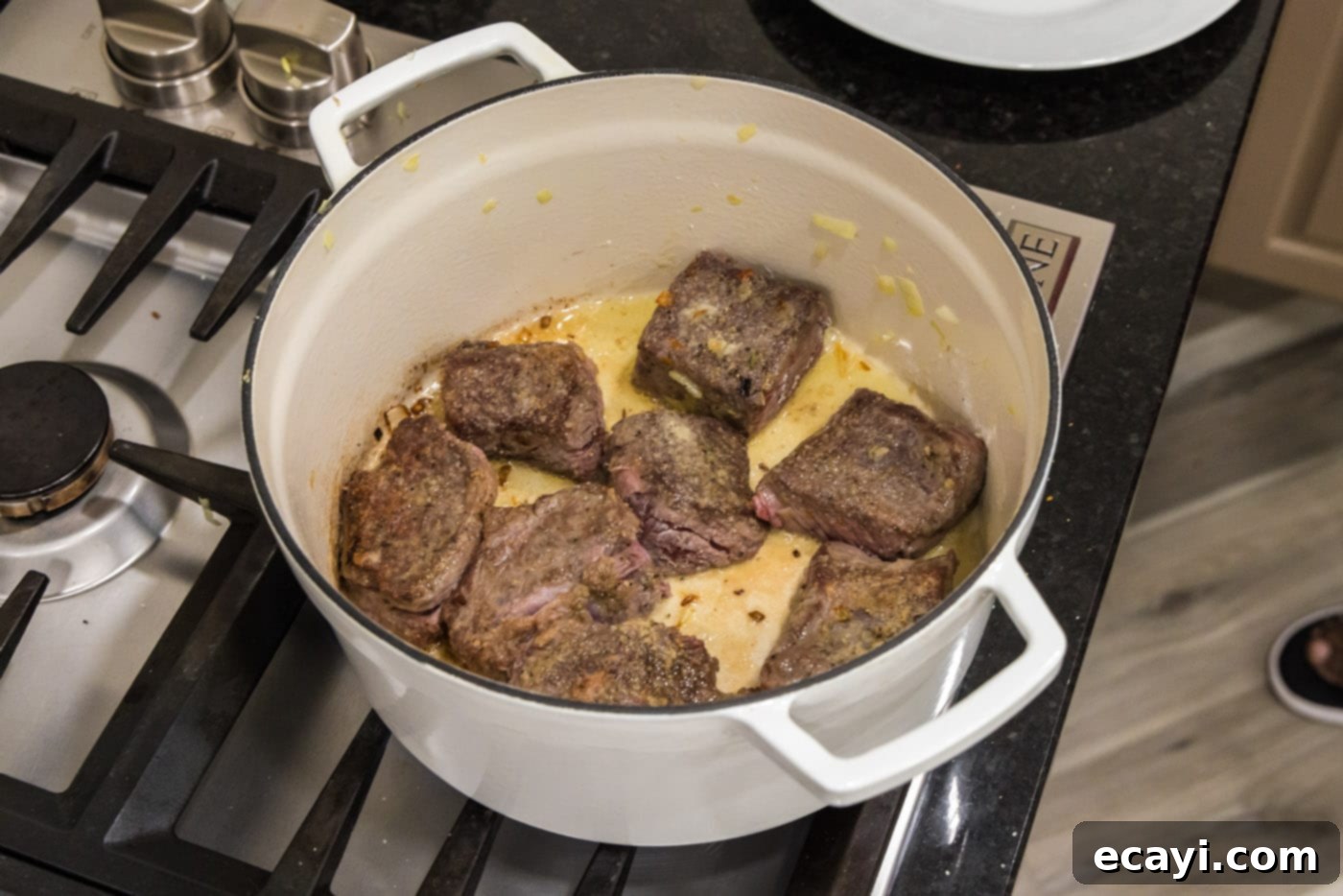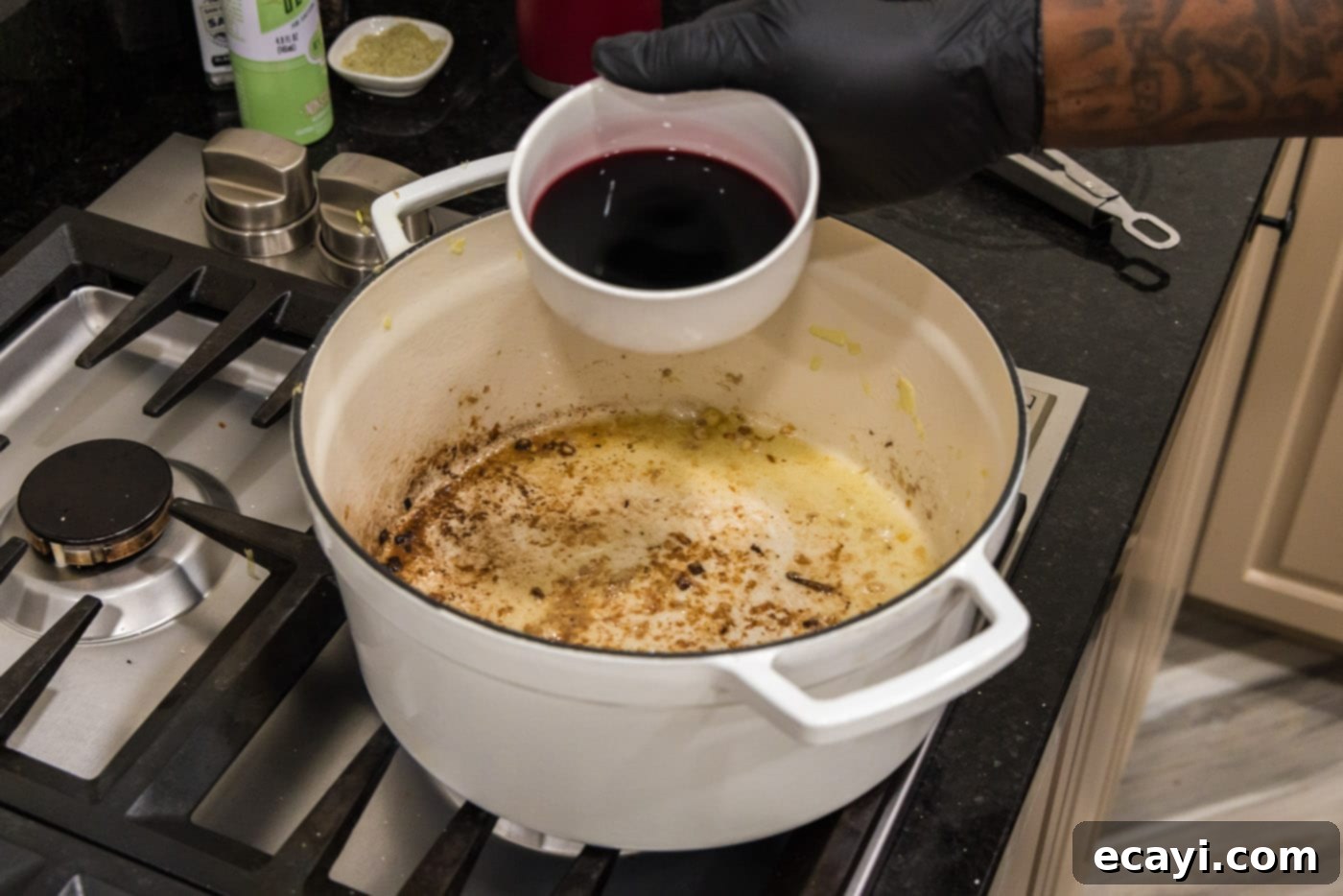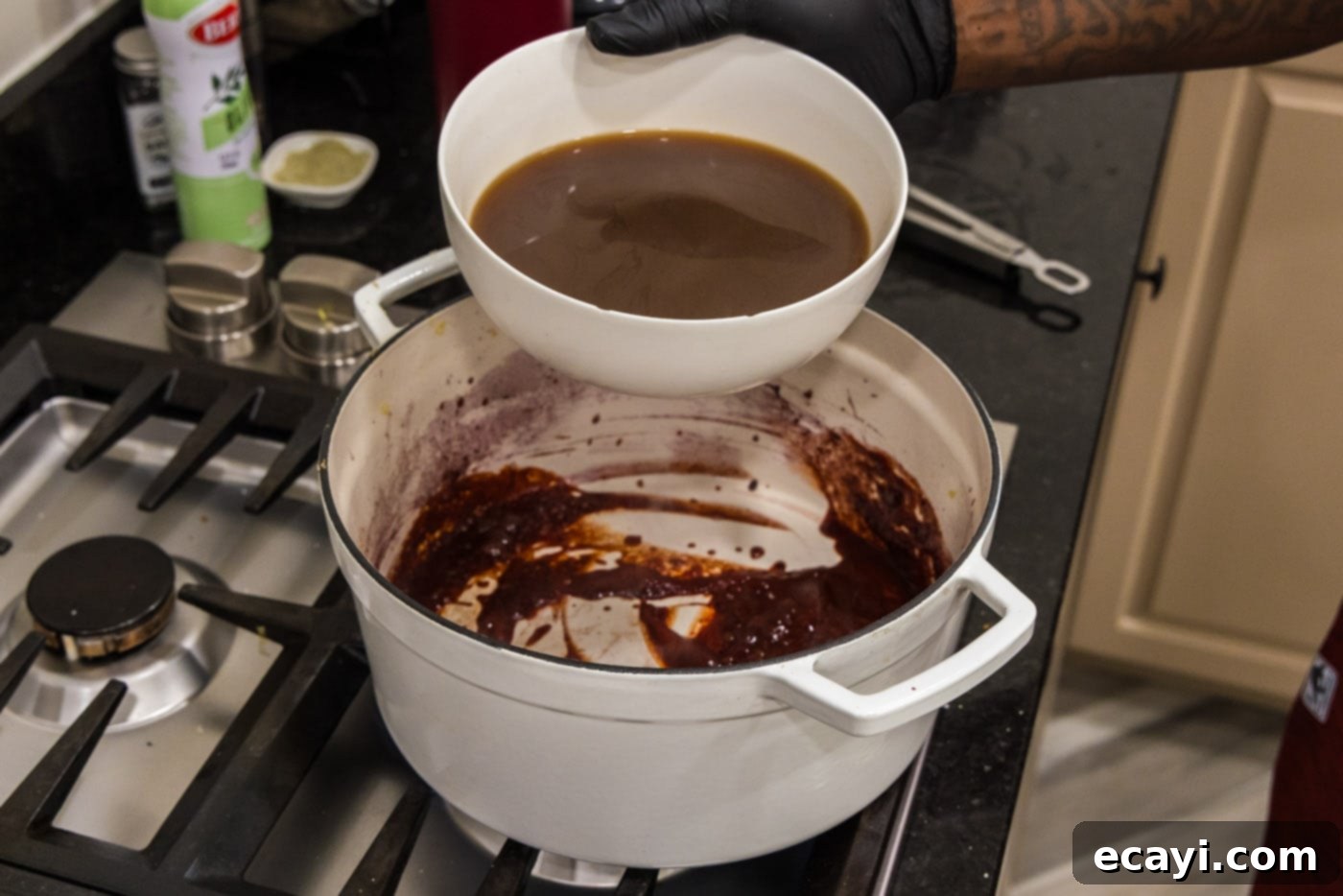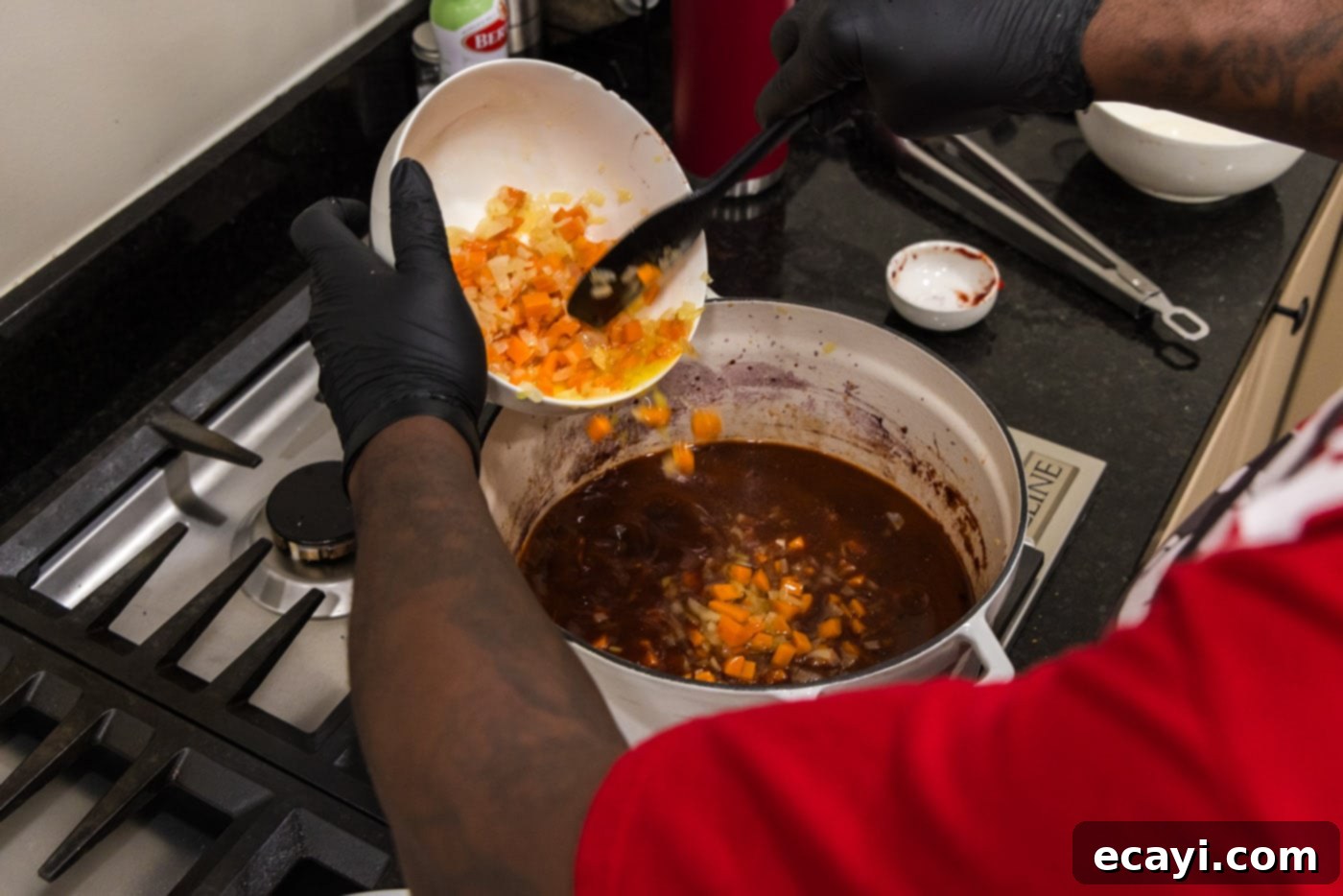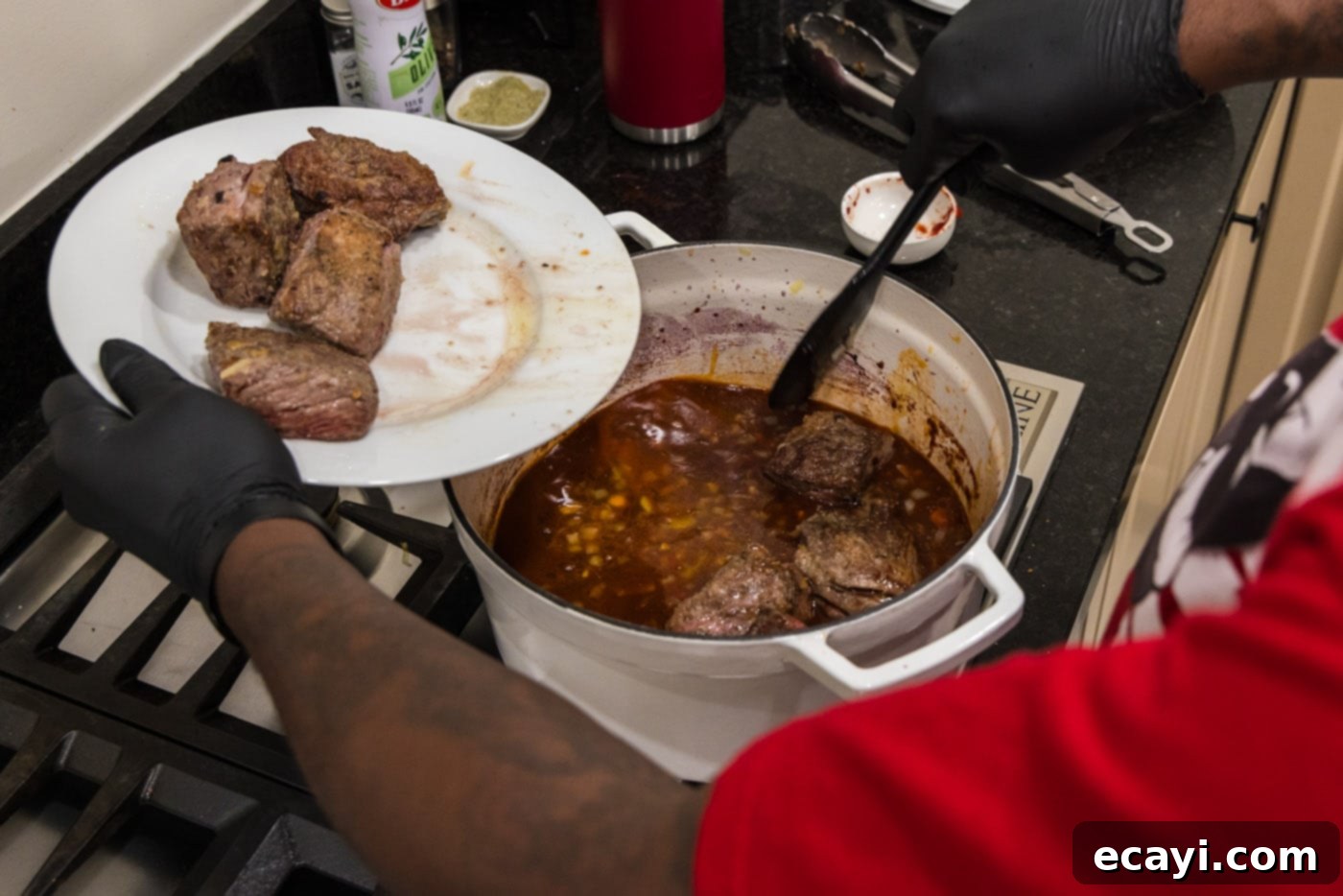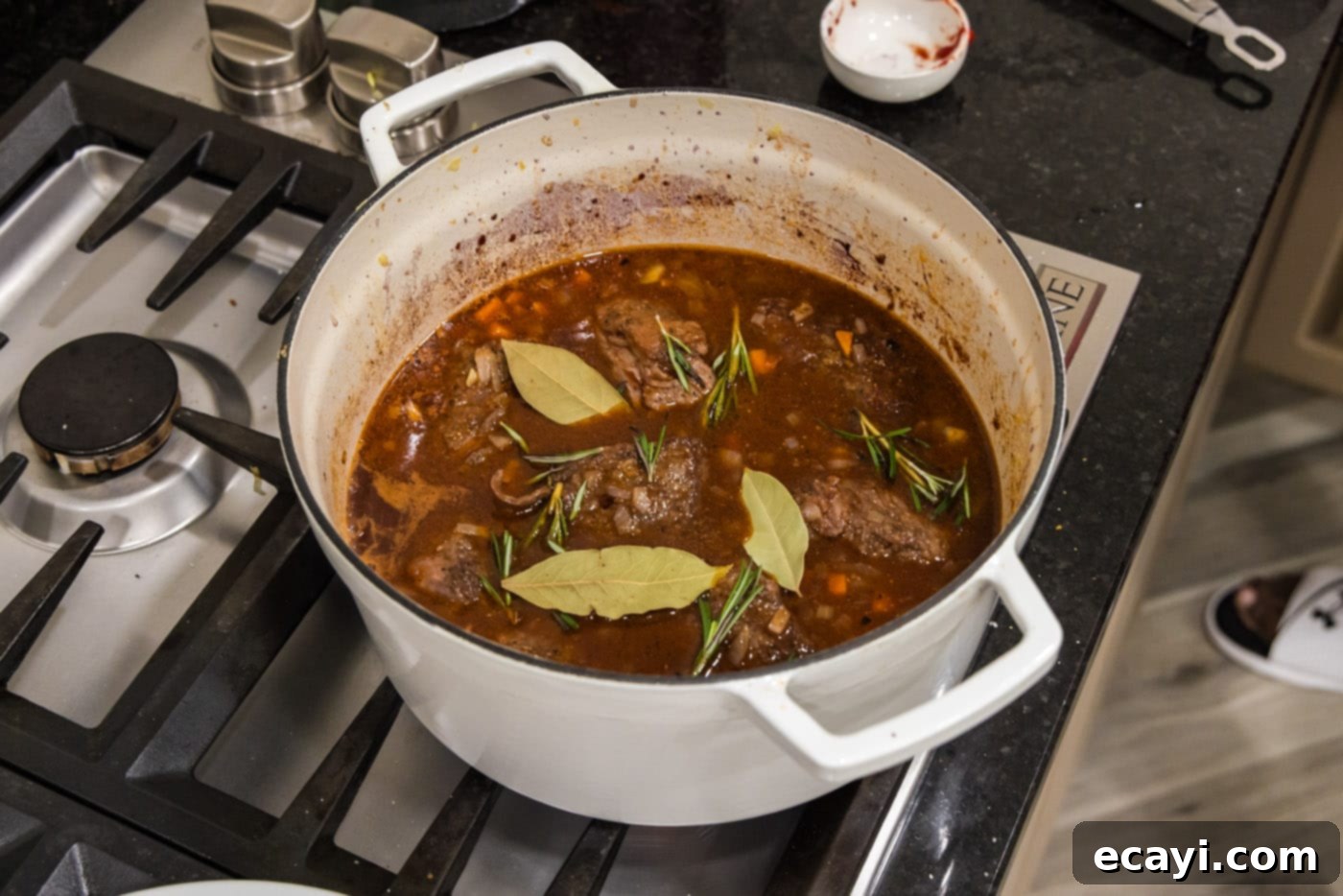Perfectly Tender Braised Beef Short Ribs with Rich Red Wine Sauce (Low & Slow Perfection)
Prepare to be amazed by the incredible tenderness of these braised beef short ribs. Cooked low and slow to perfection, each succulent bite will literally fall off the bone and melt in your mouth. Enveloped in a deeply flavorful red wine sauce, this dish transforms an ordinary cut of beef into an extraordinary culinary experience. While it presents as a gourmet meal, the process is surprisingly straightforward, making it an ideal choice for both special occasions and comforting family dinners.
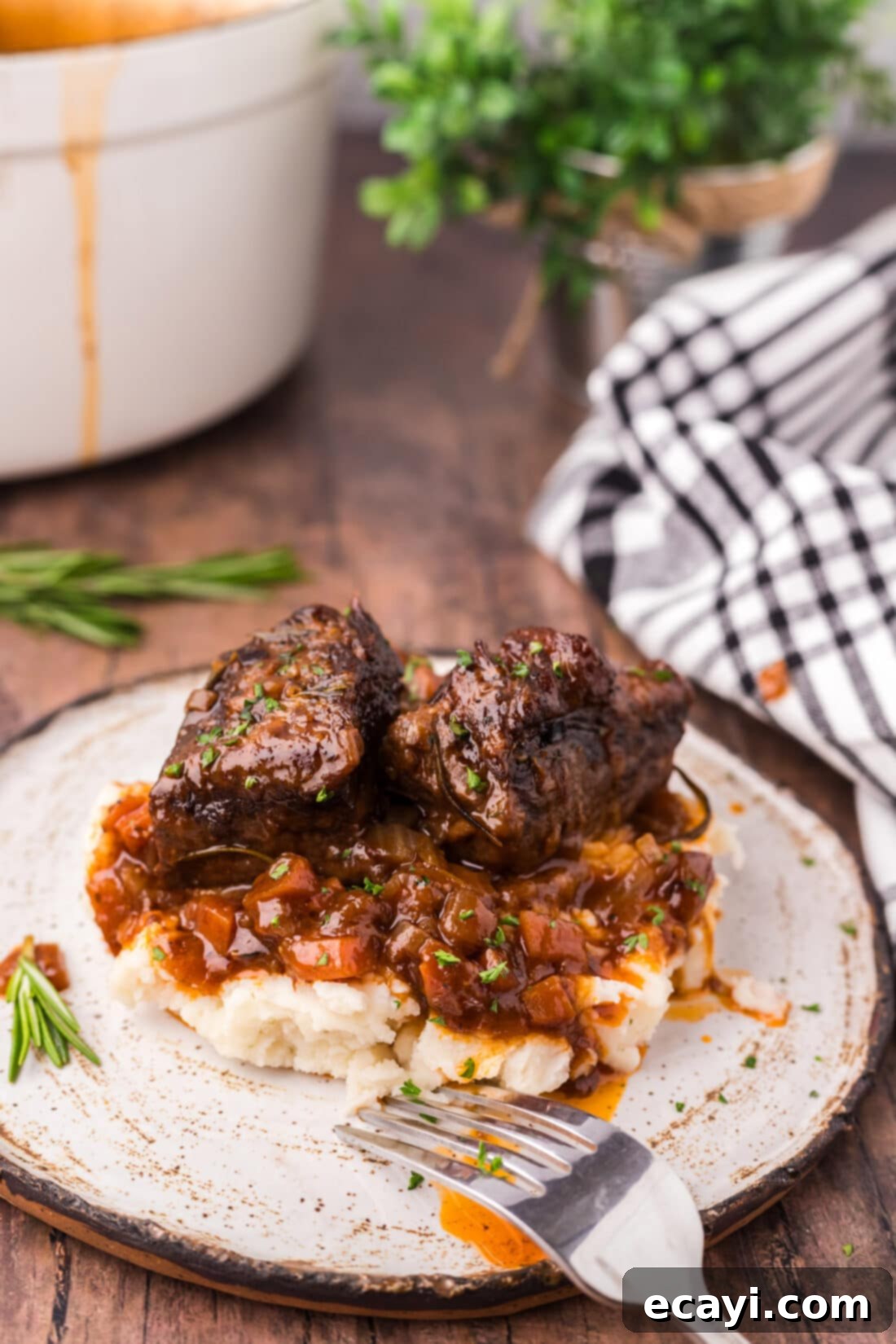
Why This Recipe Works: The Secret to Irresistibly Tender Short Ribs
Braised beef short ribs are an undeniably impressive dish, boasting a depth of flavor and fork-tender texture that delights every palate. The magic lies in the braising technique: a patient, low-and-slow cooking method that masterfully transforms tougher cuts of beef into incredibly succulent, melt-in-your-mouth perfection. This process isn’t just about cooking; it’s about culinary alchemy. First, the short ribs are expertly seared, creating a beautiful, caramelized crust through the Maillard reaction that locks in rich, savory notes. This initial step is crucial for building a complex flavor foundation and developing a deeper color.
Next, they are gently simmered in a Dutch oven, immersed in an ultra-flavorful red wine sauce. This slow cooking allows the tough connective tissues within the beef to break down gradually, rendering the meat unbelievably tender and infusing it with the aromatic essence of the sauce. The result is a profoundly delicious meal that, despite its sophisticated outcome, is remarkably simple for anyone to create in their own kitchen. Whether you opt for bone-in or boneless, beef short ribs are the quintessential cut for braising. The key to achieving that exquisite tenderness is patience; rushing the process or cooking at too high a temperature will lead to tough, chewy meat – the exact opposite of the luxurious experience we’re aiming for here. The low and slow approach ensures the collagen melts into gelatin, creating that signature fall-off-the-bone texture and enriching the sauce naturally.
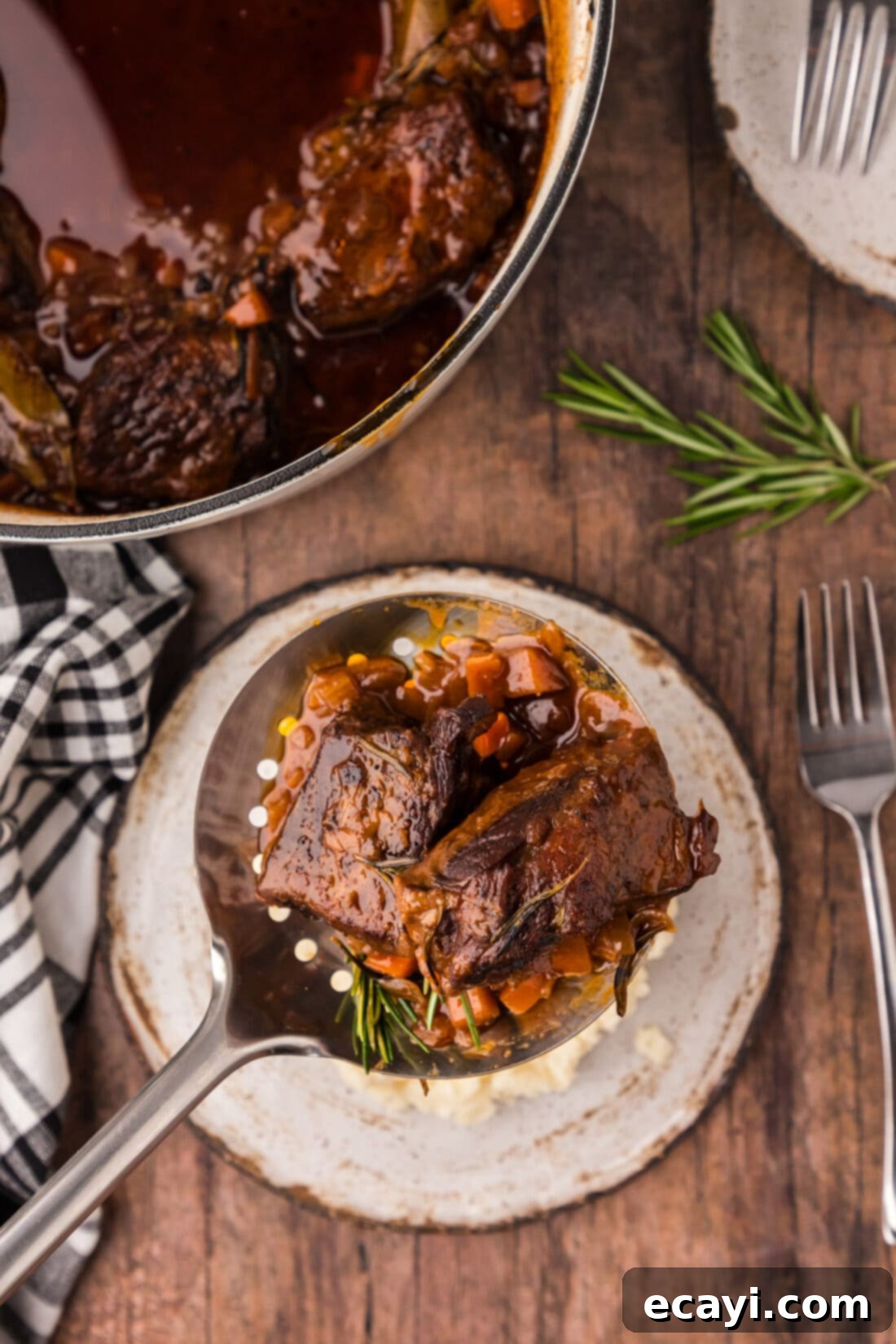
Ingredients You Will Need
For a complete list of all measurements, ingredients, and detailed instructions, please refer to the printable recipe card available at the end of this post.
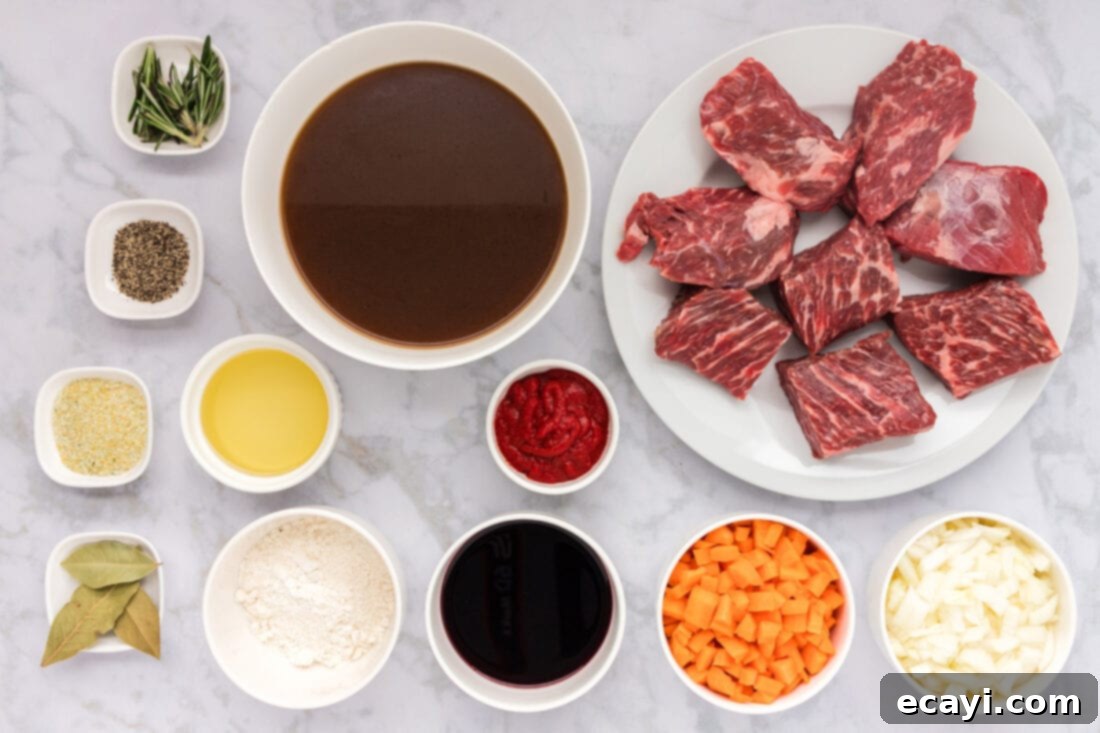
Ingredient Info and Substitution Suggestions
RIBS – When selecting your beef short ribs, whether you prefer bone-in or boneless, look for cuts with good marbling – those beautiful ribbons of fat running through the meat. This intramuscular fat is essential for moistness and flavor during the long braising process. Bone-in short ribs tend to impart a richer, more complex flavor to the sauce due to the marrow and connective tissues, while boneless ribs offer easier preparation and serving. Both varieties will yield tender results when braised correctly, so choose what best suits your preference and preparation style. The key is ensuring they have sufficient fat content for that melt-in-your-mouth texture.
SAUCE BASE – The foundation of our incredibly rich sauce is built upon a combination of dry red wine, concentrated tomato paste, and robust beef broth, along with aromatic chopped carrots and onions. These vegetables not only contribute texture but also a vital layer of savory-sweet flavor to the braising liquid, forming a classic mirepoix base. For the red wine, there’s no need to splurge on a top-shelf bottle. A dry, medium-bodied red wine that you genuinely enjoy drinking but won’t break the bank is perfect. Think varietals like Cabernet Sauvignon, Merlot, or a Zinfandel. The alcohol content will completely cook off during the long braise, leaving behind only its incredible depth of flavor and subtle acidity, which helps tenderize the meat. If you prefer to cook without wine, simply substitute it with an equal amount of additional high-quality beef broth to maintain the liquid volume and ensure a flavorful outcome. Tomato paste is a secret weapon here, providing a powerful punch of umami and a lovely reddish hue to the sauce, while the beef broth ensures a rich and savory liquid base for the ribs to luxuriate in.
FLOUR – All-purpose flour is used for dredging the short ribs. It plays a dual role: it helps create a delicious, caramelized crust on the meat when seared, thanks to the sugars in the flour browning. Crucially, it also acts as a natural thickener for the braising liquid, helping to create that luscious, velvety sauce that clings beautifully to the tender beef.
OLIVE OIL – A good quality olive oil is essential for searing the short ribs and sautéing the vegetables. Its relatively high smoke point and mild flavor make it ideal for these initial steps, contributing to the overall richness of the dish without overpowering other flavors.
SEASONINGS – Garlic salt and freshly ground black pepper are fundamental seasonings that enhance the natural, robust flavors of the beef. Season generously, as much of the seasoning will dissolve into the braising liquid, becoming part of the sauce. Always adjust to your taste preferences, remembering you can always add more later but can’t remove it once added.
HERBS – Fresh rosemary sprigs and bay leaves are classic herbs indispensable for the aromatic profile of braised dishes. Rosemary adds a fragrant, piney, slightly peppery note, while bay leaves contribute a subtle, almost minty depth. Together, they infuse the sauce with warmth, complexity, and that comforting, earthy aroma that defines good braising.
How to Make Braised Beef Short Ribs
These step-by-step photos and instructions are here to help you visualize how to make this recipe. You can Jump to Recipe to get the printable version of this recipe, complete with measurements and instructions at the bottom.
- Preheat your oven to 350 F (175 C). This ensures the oven is at the correct temperature for the slow braising process once the ribs are transferred.
- Generously season both sides of your beef short ribs with garlic salt and freshly cracked black pepper. Don’t be shy with the seasoning; this forms the initial, crucial flavor layer for the meat. Ensure an even coating for maximum flavor penetration.

- Place the all-purpose flour on a shallow plate, ready for dredging. This setup makes it easy to coat the ribs evenly.
- Heat half of the olive oil in a 6 quart Dutch oven over medium-high heat until it shimmers. Add the chopped carrots and onion and sauté for 4-5 minutes until softened and slightly browned, releasing their sweet aromas. This step builds a critical flavor base. Remove the cooked vegetables to a plate and set aside, trying to leave as much oil and any browned bits (fond) in the pan as possible.


- Add the remaining olive oil to the Dutch oven, ensuring there’s enough fat for searing.
- Dredge each of the seasoned short ribs thoroughly in the flour, making sure all sides are completely coated. Shake off any excess. Carefully place the dredged short ribs in the hot pan and brown them on all sides until a deep, golden crust forms. This searing step is crucial for developing rich flavor and color. Remove the browned meat to a clean plate.



- To the browned bits (fond) remaining in the pan, carefully pour in the red wine. Use a wooden spoon to scrape up all the flavorful bits from the bottom of the pot, deglazing the pan. Then, stir in the tomato paste and beef broth. Return the reserved sautéed vegetables and the seared short ribs to the pan, nestling them into the liquid.




- At this point, you can sprinkle in additional garlic salt and pepper if you desire, adjusting the seasoning to your taste before the long braise.
- Add the fresh rosemary sprigs and bay leaves to the pot. Bring the liquid to a gentle boil on the stovetop, then immediately turn off the heat. This ensures even heating before transferring to the oven.

- Securely place the lid on the Dutch oven and transfer it to your preheated oven. Bake for 2 hours and 30 minutes. The low, consistent heat will slowly break down the meat, making it incredibly tender.
- Before serving, carefully remove and discard the bay leaves and rosemary sprigs. They have infused their flavor into the sauce and are not meant to be eaten.
Frequently Asked Questions & Expert Tips
Dredging the short ribs in flour before searing is a crucial step that serves two primary purposes. Firstly, it creates a delicate, golden-brown crust on the surface of the meat during searing, a result of the Maillard reaction. This caramelization locks in moisture and develops incredibly rich, savory flavors that form the foundation of the dish. Secondly, the flour that adheres to the ribs also helps to thicken the braising liquid as it cooks, transforming it into a luxurious, velvety sauce that clings beautifully to the tender beef.
Store cooled leftovers in an air-tight container, ensuring the ribs are submerged in the sauce for maximum moisture and flavor. Keep them in the refrigerator for up to 4 days. To reheat, gently warm them in a saucepan over medium-low heat until warmed through, or in a covered oven-safe dish in the oven.
Yes, absolutely! Braised beef short ribs freeze beautifully. To do so, allow the cooked beef and sauce to cool completely. Transfer them to an air-tight freezer-safe container or a large zip-top bag, ensuring there’s minimal air. Store in the freezer for up to 2 months for best quality. Thaw in the refrigerator overnight before reheating. The flavors often deepen even further after freezing and thawing.
Yes, you can certainly overcook them in the sense of making them tough and dry. The goal with braising is to break down tough connective tissues into gelatin. If you cook them too quickly at a high temperature, the muscle fibers seize up before the connective tissue has a chance to fully transform, resulting in chewy and dry meat. However, if cooked low and slow for an extended period, the collagen breaks down, making the meat incredibly tender. It’s a balance of time and temperature; too much heat too fast equals tough, but sufficient low heat for enough time equals tender perfection. Trust the low and slow method!
After braising, it’s highly beneficial to let the short ribs rest in the hot sauce for about 10-15 minutes before serving. This crucial step allows the meat fibers to relax and the juices to redistribute evenly throughout the beef, ensuring every bite is as moist, tender, and flavorful as possible. It also gives the rich sauce a moment to settle and intensify.
Before serving, especially if you’re making this dish ahead, you might notice a layer of rendered fat on top of the sauce. For a cleaner, richer tasting sauce that isn’t greasy, gently skim off this excess fat with a spoon or ladle. This can be done more easily after the sauce has cooled slightly, or even after refrigerating overnight, as the fat will solidify and be much easier to remove in larger pieces.
Braised dishes, and short ribs in particular, often taste even better the next day. The flavors have more time to meld and deepen, creating an even more harmonious and complex profile. You can prepare the entire dish a day in advance, let it cool completely, refrigerate overnight, and then gently reheat it on the stovetop or in the oven until warmed through. This makes braised short ribs an excellent option for entertaining, allowing you to enjoy your guests without last-minute cooking stress.
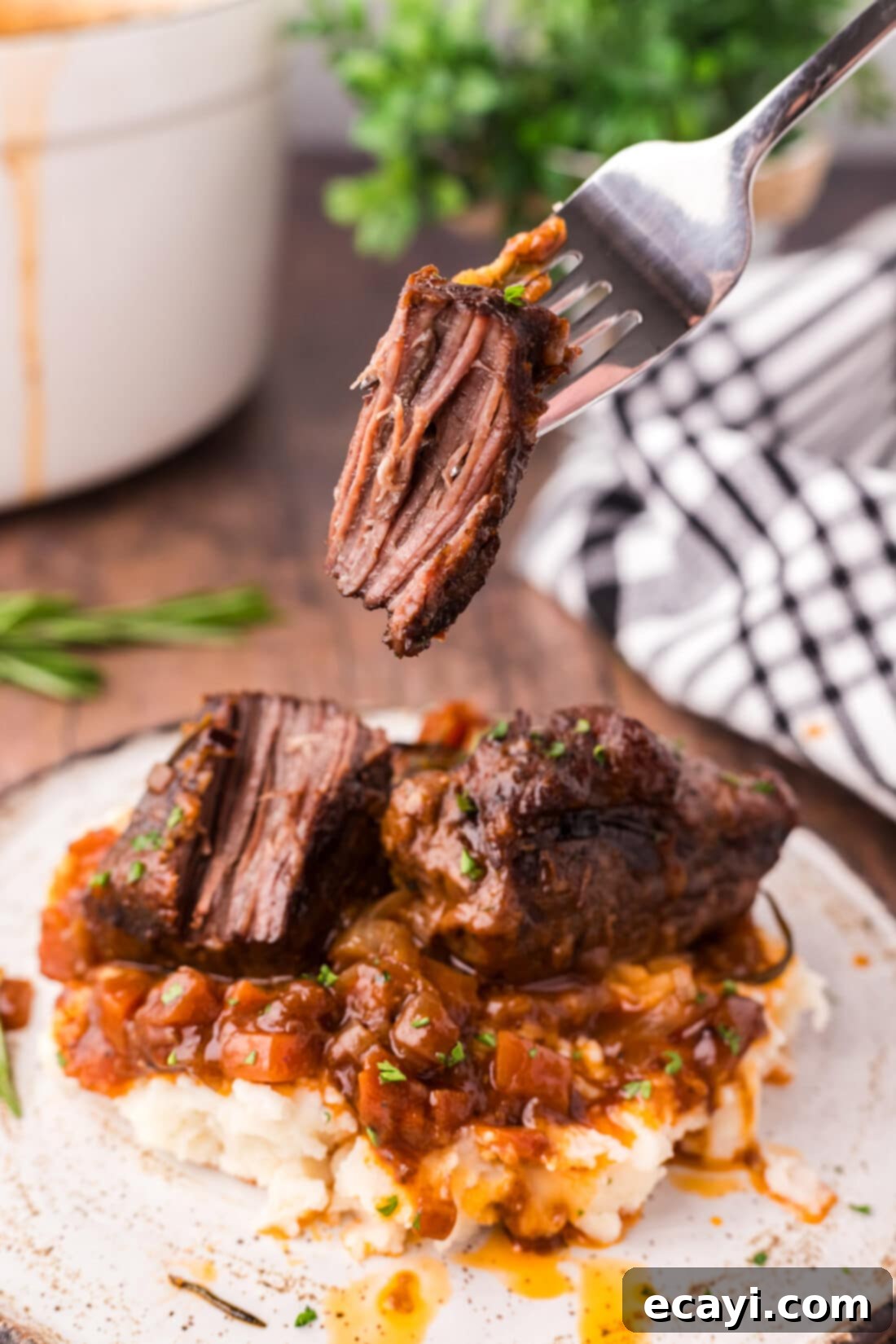
Serving Suggestions
These rich and tender braised beef short ribs are perfectly complemented by sides that can soak up their glorious red wine sauce. Creamy mashed potatoes are a classic pairing, providing a comforting and smooth contrast to the savory meat. Other excellent choices include creamy polenta, cheesy grits, egg noodles, or a hearty risotto. For a lighter touch, consider pairing them with roasted root vegetables like carrots and parsnips, sautéed asparagus, tender green beans, or steamed broccoli. Always remember to generously spoon the luxurious braising sauce over the top of the short ribs and your chosen accompaniment before enjoying. A sprinkle of fresh chopped parsley or chives at the end adds a delightful touch of brightness and color, enhancing both presentation and flavor.
More Short Ribs Recipes
- Beef Short Ribs
- Boneless Beef Short Ribs
- Smoked Beef Short Ribs
- Instant Pot Beef Short Ribs
- Crockpot Beef Short Ribs
I love to bake and cook and share my kitchen experience with all of you! Remembering to come back each day can be tough, that’s why I offer a convenient newsletter every time a new recipe posts. Simply subscribe and start receiving your free daily recipes!
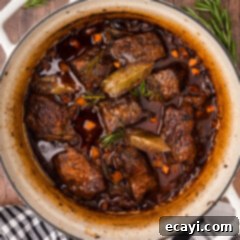
Braised Beef Short Ribs
IMPORTANT – There are often Frequently Asked Questions within the blog post that you may find helpful. Simply scroll back up to read them!
Print It
Pin It
Rate It
Save ItSaved!
Ingredients
- 2 pounds boneless beef short ribs
- garlic salt to taste
- black pepper to taste
- ½ cup all-purpose flour
- 3 Tablespoons olive oil divided
- 1 cup chopped onion
- 1 cup chopped carrot
- ½ cup dry red wine
- 3 Tablespoons tomato paste
- 2 cups beef broth
- 2 sprigs rosemary leaves only
- 3 bay leaves
Things You’ll Need
-
6 qt Dutch Oven
Before You Begin
- We chose boneless beef short ribs for this recipe, but you can easily substitute them with bone-in short ribs. You want nice ribbons of fat in the short ribs you choose.
- You do not need top-shelf quality red wine for this recipe, choose a dry red wine that you enjoy the flavor of but won’t break the bank. The alcohol content is cooked out but lends incredible flavor to the overall dish. If you prefer to cook without wine, you can substitute it with additional beef broth.
- Store cooled leftovers in an air-tight container kept in the refrigerator for up to 4 days. Reheat in a saucepan over medium-low heat until warmed through.
- To freeze – transfer the cooled beef and remaining sauce to an air-tight container or large zip-top bag. Store in the freezer for up to 2 months. Thaw in the refrigerator overnight before reheating.
Instructions
-
Preheat oven to 350 F.
-
Season both sides of short ribs with garlic salt and black pepper, to taste.2 pounds boneless beef short ribs, garlic salt, black pepper
-
Place flour on a shallow plate.1/2 cup all-purpose flour
-
Heat half of the olive oil in a 6 quart Dutch oven over medium high heat until shimmering. Add chopped carrots and onion and saute for 4-5 minutes. Remove vegetables to a plate and set aside, leaving as much oil in the pan as you can.1 cup chopped onion, 1 cup chopped carrot
-
Add remaining olive oil to the pan.
-
Dredge each of the seasoned short ribs in flour, being sure to get flour on all sides. Place dredged short ribs in pan and brown on all sides. Remove browned meat to a plate.
-
To the browned bits in the pan, add red wine, tomato paste, beef broth, reserved vegetables, and short ribs.1/2 cup dry red wine, 3 Tablespoons tomato paste, 2 cups beef broth
-
At this point you can sprinkle in additional garlic salt and pepper if you like.
-
Add rosemary and bay leaves. Bring to a gentle boil then turn off heat.2 sprigs rosemary, 3 bay leaves
-
Place lid on Dutch oven and place in preheated oven. Bake for 2 hours and 30 minutes.
-
Remove bay leaves and rosemary leaves before serving.
Nutrition
The recipes on this blog are tested with a conventional gas oven and gas stovetop. It’s important to note that some ovens, especially as they age, can cook and bake inconsistently. Using an inexpensive oven thermometer can assure you that your oven is truly heating to the proper temperature. If you use a toaster oven or countertop oven, please keep in mind that they may not distribute heat the same as a conventional full sized oven and you may need to adjust your cooking/baking times. In the case of recipes made with a pressure cooker, air fryer, slow cooker, or other appliance, a link to the appliances we use is listed within each respective recipe. For baking recipes where measurements are given by weight, please note that results may not be the same if cups are used instead, and we can’t guarantee success with that method.
